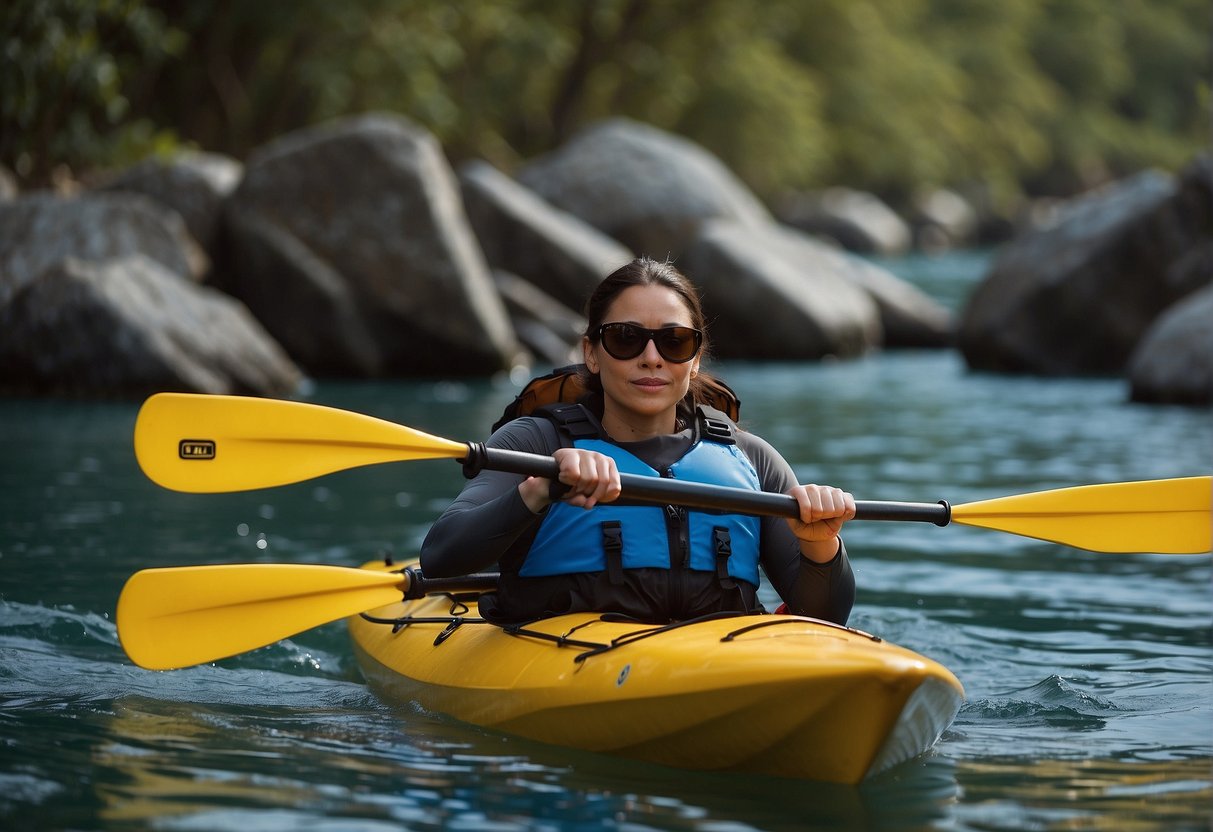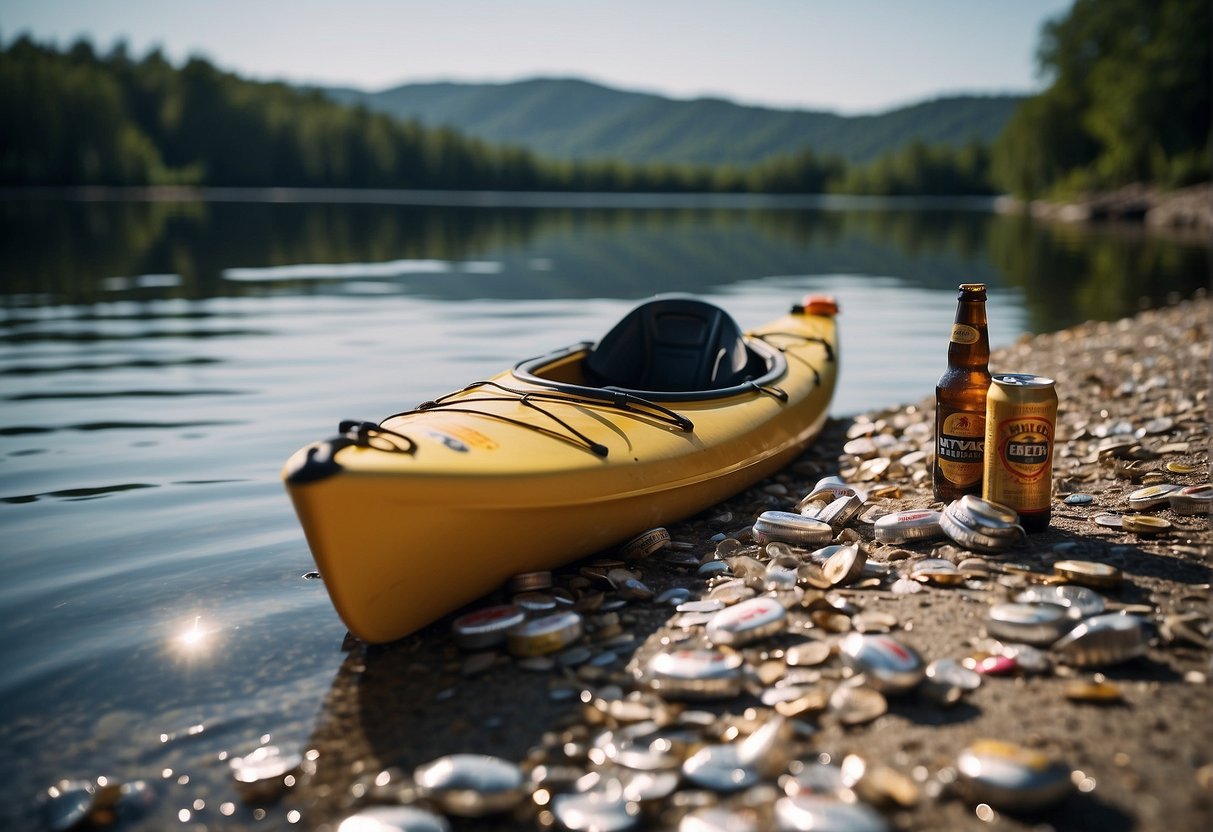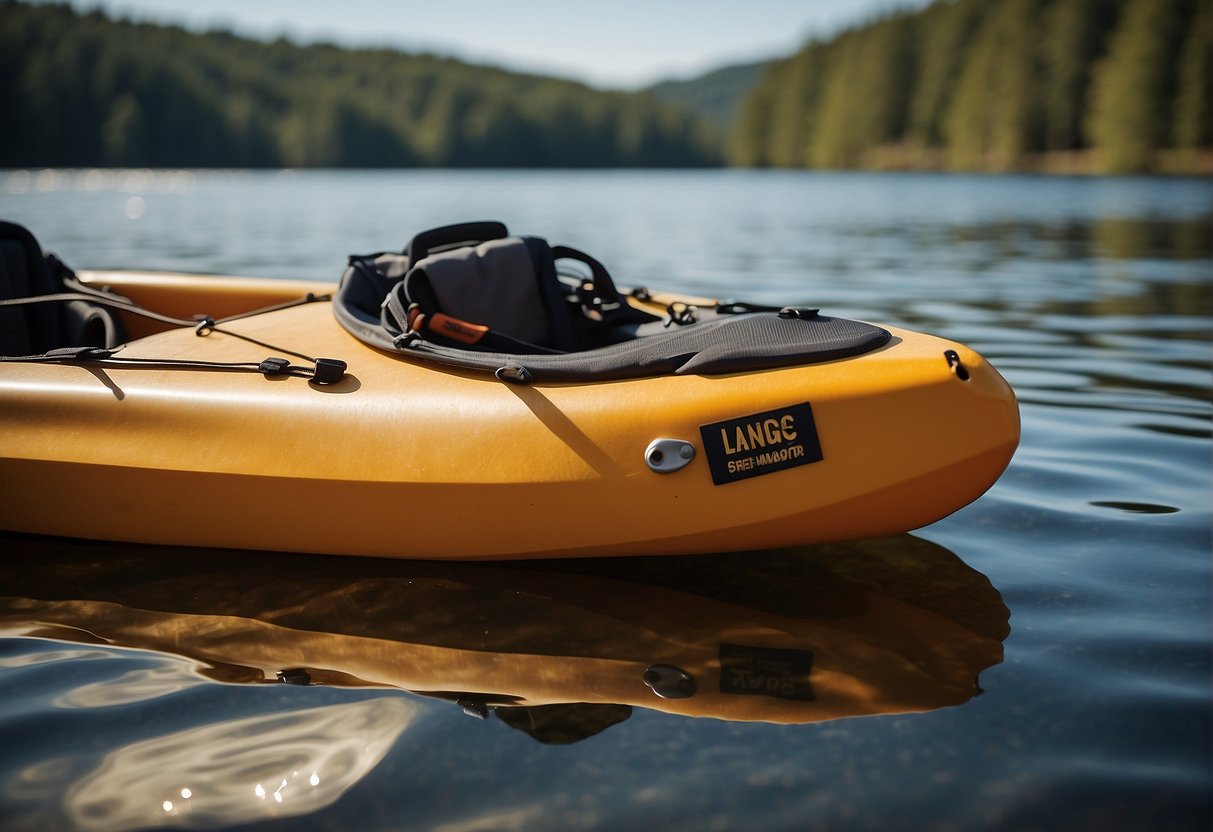If you’re planning a kayaking trip, you might be wondering if it’s okay to bring alcohol along. After all, what’s better than enjoying a cold beer or glass of wine while taking in the scenery? However, before you pack your cooler full of drinks, it’s important to know the rules and potential risks of drinking on a kayak.

First and foremost, it’s important to note that laws regarding drinking on a kayak vary by state. While some states allow alcohol consumption on kayaks, others prohibit it. It’s important to research the laws in your specific location before bringing any alcohol on your trip. Additionally, it’s worth noting that even if drinking on a kayak is legal in your state, it’s still important to do so responsibly.
Drinking alcohol can impair your balance and coordination, which can be dangerous when you’re navigating a kayak. Additionally, alcohol can make you more susceptible to hypothermia if you’re paddling in cold water. It’s also worth noting that kayaking while under the influence is illegal in most places and can result in legal consequences, such as fines, license suspension, or even jail time. With that said, let’s dive into the details of drinking on a kayak and what you need to know before bringing any alcohol on your next kayaking adventure.
Understanding BUI and Kayaking Laws

As a kayaker, you may be wondering if it is legal to drink alcohol while kayaking. The answer is not straightforward. It depends on the state you are in and the blood alcohol content (BAC) limit set by the state’s boating laws.
Alcohol and Watercraft Regulations
Most states have enacted laws that prohibit operating a watercraft while under the influence of alcohol or drugs. These laws apply to all types of watercraft, including kayaks. Therefore, if you are caught operating a kayak while under the influence of alcohol, you may be charged with Boating Under the Influence (BUI).
It is essential to note that the BAC limit for boating is typically lower than the limit for driving a car. In most states, the BAC limit for boating is 0.08%, the same as the limit for driving a car. However, some states have lower BAC limits for boating, such as 0.02%.
BUI vs. DUI: Key Distinctions
It is important to understand that BUI and DUI charges are not the same. While they share similarities, there are key distinctions between the two charges.
BUI charges are specific to operating a watercraft while under the influence of alcohol or drugs. DUI charges, on the other hand, are specific to operating a motor vehicle while under the influence of alcohol or drugs.
The penalties for BUI and DUI charges are also different. BUI charges may result in fines, jail time, and the suspension of your boating license. DUI charges may result in fines, jail time, and the suspension of your driver’s license.
In conclusion, it is illegal to operate a kayak while under the influence of alcohol or drugs in most states. It is important to understand the BAC limit set by your state’s boating laws and to avoid drinking alcohol while kayaking.
Safety Risks of Drinking While Kayaking

Kayaking can be a fun and relaxing activity, but it is important to remember that safety should always be a top priority. Drinking alcohol while kayaking can increase the risk of accidents and injury, and it is important to understand the potential risks before you hit the water.
Impact on Judgment and Balance
Alcohol can impair your judgment, balance, and coordination, which can increase the risk of accidents or injuries while kayaking. According to BoatingNarrative, “drinking can also lead to nausea, vomiting, and stomach pain and make you susceptible to sunburn if the weather is hot.” This can be especially dangerous if you are kayaking in rough waters or strong currents.
Increased Risk of Accidents and Injury
Drinking alcohol while kayaking can also increase the risk of boating accidents and injury. According to KayakPapa, “alcohol will impact your balance and coordination, making it more difficult to paddle and navigate your kayak. Additionally, alcohol can make you more susceptible to hypothermia, so if you’re paddling in cold water, you should avoid drinking altogether.”
To have a safe and enjoyable experience, it is best to avoid consuming alcohol before or during your kayaking trip. Always wear a life jacket, stay alert, and be aware of your surroundings. Remember, safety should always be your top priority when kayaking.
Legal Consequences of Kayaking Under the Influence

Kayaking while under the influence of alcohol is a serious offense that can result in legal consequences. In most states, kayaks are considered vessels, which means drinking alcohol on board a kayak can potentially land you with a charge of Boating Under the Influence (BUI).
Penalties and Fines
The penalties and fines for BUI can vary depending on the state and the severity of the offense. In general, the fines for a first-time offense can range from a few hundred dollars to several thousand dollars. Additionally, you may be required to attend alcohol education classes or community service.
Jail Time and Community Service
In some cases, BUI can also result in jail time. For example, in Florida, a first-time BUI offender can face up to six months in jail, while a second-time offender can face up to nine months. Community service is also a common punishment for BUI offenders, and it can range from a few hours to hundreds of hours.
It’s important to note that BUI can also result in the suspension of your boating license or even your driver’s license. The length of suspension can vary depending on the state and the severity of the offense.
In conclusion, drinking while kayaking can result in serious legal consequences, including fines, jail time, and community service. It’s important to understand the legal limit for alcohol consumption while operating a kayak and to avoid drinking while kayaking altogether.
Equipment and Registration Requirements

When it comes to kayaking, it’s important to understand the equipment and registration requirements that come with it. In this section, we will cover the basics of kayak registration and operator licensing, as well as the safety gear and visibility requirements you need to know.
Kayak Registration and Operator Licensing
In most states, you are not required to register your kayak if it is not motorized. However, if you are using a trolling motor or any other type of motorized watercraft, you will need to register your kayak as a motorboat. This applies to all vessels over a certain length, which varies by state. You can find more information on kayak registration rules by state here.
In addition to registration, some states require operator licensing for motorized kayaks. This means that you will need to pass a boating safety course and obtain a license before you can operate your motorized kayak legally. Make sure to check your state’s laws and regulations to see if this applies to you.
Safety Gear and Visibility
Regardless of whether your kayak is motorized or not, there are certain safety gear requirements that you need to follow. For example, all kayaks must have at least one Type I, II, III, or V personal flotation device (PFD) for each person on board. Additionally, boats over a certain length are required to carry a Type IV throwable PFD.
In terms of visibility, it’s important to have proper lighting and signaling devices on your kayak. This includes a white light visible from 360 degrees for use between sunset and sunrise, as well as a whistle or horn to signal other vessels.
Overall, it’s important to stay informed of your state’s specific requirements for kayak registration, operator licensing, and safety gear. By following these rules and regulations, you can ensure a safe and enjoyable kayaking experience.
Navigating and Camping with Alcohol on Waterways
If you plan to enjoy an alcoholic beverage while kayaking, it is important to do so responsibly. Here are some guidelines to follow for responsible alcohol consumption on waterways.
Guidelines for Responsible Alcohol Consumption
- Always designate a sober paddler. If everyone in your group plans to drink, make sure there is at least one person who abstains from alcohol and is responsible for navigating the kayak.
- Drink plenty of water before and during your kayak trip to stay hydrated.
- Limit alcohol consumption to one or two drinks per hour.
- Avoid drinking hard liquor or consuming drinks with a high alcohol content.
- Never drink and kayak alone. Always paddle with a group.
- Avoid drinking while kayaking in rough waters or strong currents.
- Keep your alcohol in a sealed container and store it in a secure location on your kayak.
Considerations for Overnight Trips
If you plan to camp overnight during your kayak trip, there are additional considerations to keep in mind when it comes to consuming alcohol.
- Check the rules and regulations for the waterway you will be paddling on. Some lakes and ponds may have restrictions on alcohol consumption.
- Pack out all of your trash, including empty alcohol containers.
- Avoid drinking heavily before setting up camp or starting a fire.
- Make sure you have plenty of water and food to balance out any alcohol consumption.
- Never drink and operate a fire or stove.
- Respect quiet hours and the natural environment around you.
Remember, drinking while kayaking can impair your judgment and coordination, making it more difficult to navigate your kayak and potentially putting yourself and others in danger. Always prioritize safety and responsible alcohol consumption when enjoying the waterways.